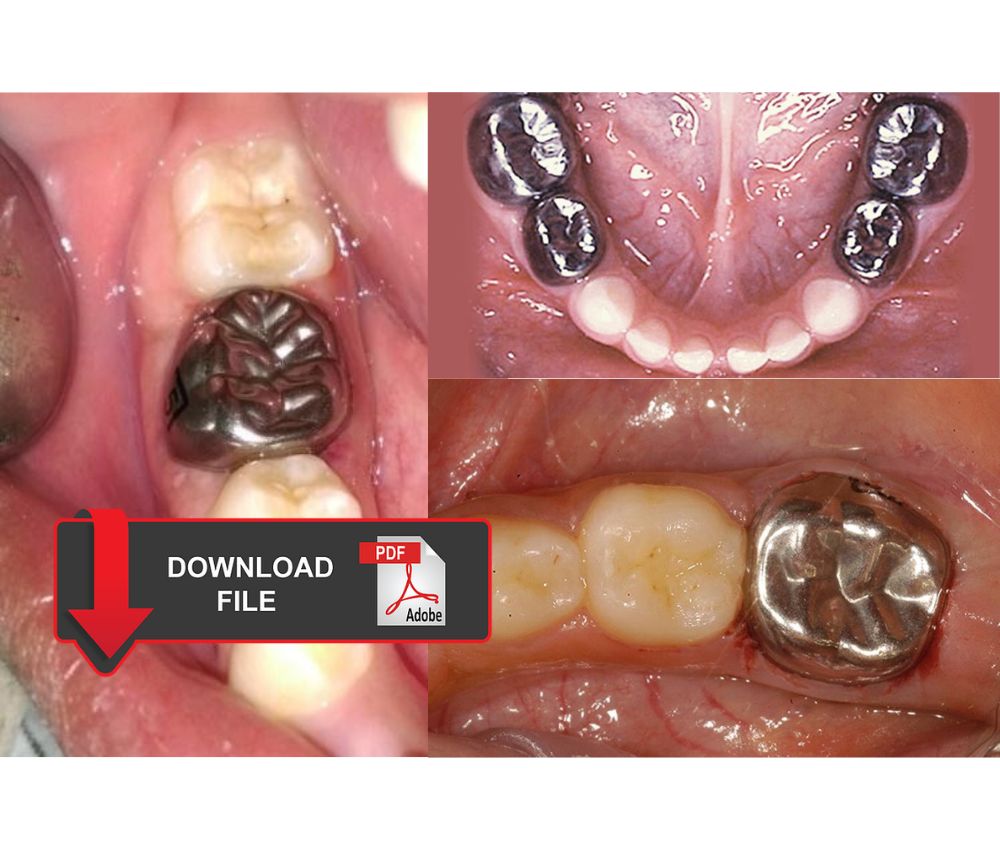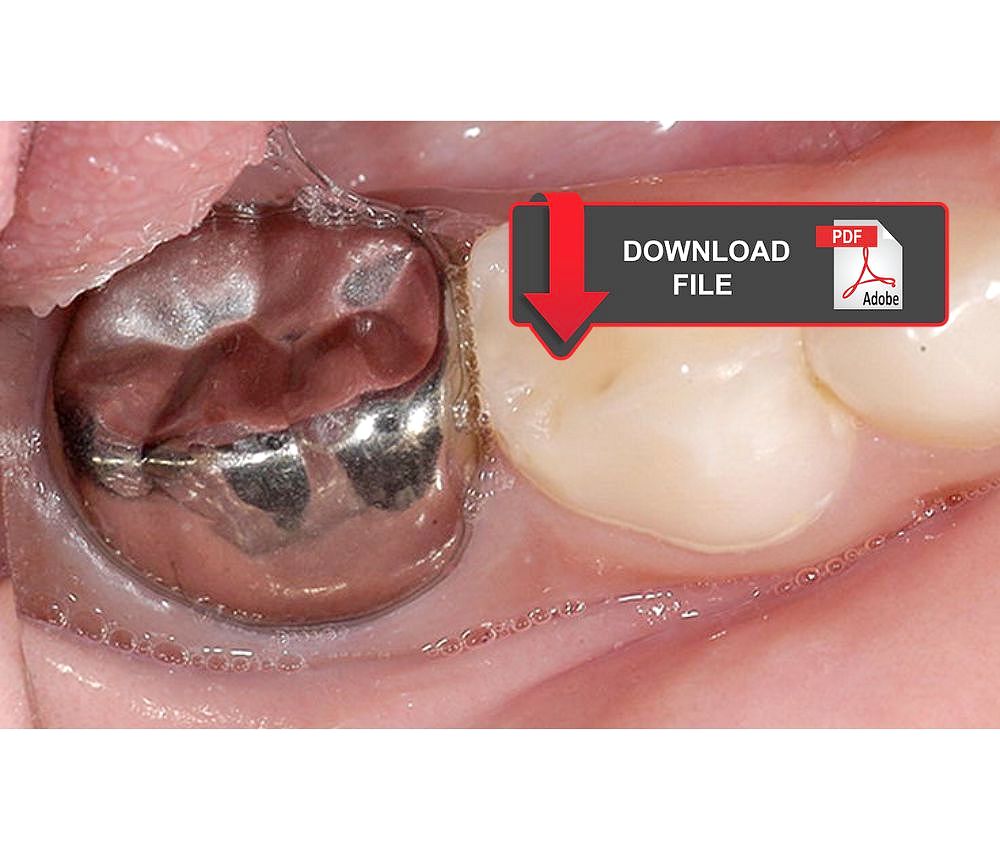Pediatric dental crowns are widely used in the restoration of primary teeth with extensive decay, developmental defects, or after pulp therapy.
📌 Recommended Article :
PDF 🔽 Esthetic restoration of deciduous anterior teeth using prefabricated zirconia crowns: A case report ... Currently, highly aesthetic materials are available, such as zirconia crowns, to rehabilitate incisors. We share the case of a rehabilitation with zirconia crowns.This article reviews current evidence regarding their indications, benefits, and long-term success, focusing on stainless steel crowns (SSCs), zirconia crowns, and recent advances.
Advertisement
✅ Introduction
Restoring severely decayed primary teeth poses a significant challenge in pediatric dentistry. Conventional fillings often fail due to limited durability and the complexity of managing caries in children. Pediatric dental crowns, particularly stainless steel and zirconia crowns, provide a reliable restorative option. Their role in maintaining arch integrity, mastication, and aesthetics has made them a cornerstone in modern pediatric restorative dentistry.
📌 Recommended Article :
Webinar 🔽 Webinar: Full Mouth Rehabilitation Treatment Planning in pediatric dentistry - Dr. Osama El Shashawy ... Addressing these complexities demands more than standardized care; it requires an evidence-based framework adapted to each child’s risk profile and clinical condition.✅ Indications
° Extensive caries affecting multiple tooth surfaces.
° After pulpotomy or pulpectomy procedures.
° Developmental anomalies such as amelogenesis imperfecta or dentinogenesis imperfecta.
° Fractured teeth requiring coverage.
° Cases where behavior management limits frequent re-interventions.
📌 Recommended Article :
PDF 🔽 Oral cysts in newborns: Characteristics, diagnosis and treatment ... Diagnosis and treatment is necessary to prevent alterations from intervening in normal functions such as complex sucking, swallowing and phonation.✅ Types of Pediatric Crowns
° Stainless Steel Crowns (SSC): Gold standard for posterior teeth due to durability and cost-effectiveness.
° Zirconia Crowns: Increasingly used for anterior and posterior restorations, offering superior aesthetics.
° Resin-veneered Crowns: Intermediate option balancing aesthetics and functionality.
📌 Recommended Article :
PDF/Video 🔽 Zirconia crowns in pediatric dentistry: Clinical considerations and step-by-step procedure ... Learn about the indications and contraindications of zirconia crowns in pediatric dentistry, in addition to the clinical considerations and protocol for successful implementation of the crowns.✅ Benefits
° Provide full coverage protection against recurrent caries.
° High survival rates in comparison to amalgam or composite restorations.
° Improve chewing function and preserve arch length.
° Aesthetic options (zirconia) enhance parental and patient satisfaction.
📌 Recommended Article :
PDF 🔽 Indications for Hall technique usage in pediatric dentistry ... The Hall technique is a minimally invasive technique that controls the progression of caries, making it a much simpler procedure with less preparation.✅ Long-Term Success
° Survival rates: SSCs demonstrate over 90% success rates at 5 years (Innes et al., 2015).
° Zirconia crowns: Show comparable survival with better aesthetics but require precise tooth preparation.
° Parental satisfaction: Significantly higher for zirconia crowns due to aesthetics (Walia et al., 2014).
📊 Tabla comparativa: Pediatric Dental Crowns
| Aspecto | Ventajas | Limitaciones |
|---|---|---|
| Stainless Steel Crowns (SSC) | High durability, cost-effective, >90% survival | Poor aesthetics, metallic appearance |
| Zirconia Crowns | Superior aesthetics, high parental satisfaction, biocompatible | Require extensive tooth preparation, higher cost |
| Resin-Veneered Crowns | Balance between cost and aesthetics | Prone to veneer fracture and wear |
| Long-Term Outcomes | High survival rates, preservation of arch integrity | Technique-sensitive, dependent on case selection |
💬 Discussion
The literature strongly supports the use of pediatric crowns as a superior restorative option for severely compromised primary teeth. While stainless steel crowns remain the most cost-effective and durable, zirconia crowns address increasing parental demands for aesthetics. However, zirconia requires more aggressive tooth reduction, which may limit its indications in certain cases.
The long-term success of pediatric crowns is linked to proper case selection, clinical technique, and patient cooperation. Advances in adhesive dentistry and biomimetic materials may further enhance restorative outcomes, but crowns continue to hold a key role in comprehensive pediatric oral care.
📌 Recommended Article :
Video 🔽 Celluloid Strip Crown for Primary Anterior Tooth Restoration - Step by step ... Oral rehabilitation is necessary to restore chewing function and prevent changes in the eruption of permanent teeth and future malocclusions. In dentistry, resins and celluloid crowns are used to rehabilitate anterior teeth.✍️ Conclusion
Pediatric dental crowns are the treatment of choice for extensively damaged primary teeth, providing excellent durability, functional preservation, and, with modern options, improved aesthetics. Both stainless steel and zirconia crowns demonstrate high long-term survival rates. Future research should focus on minimally invasive approaches that combine aesthetics with biological preservation.
📝 Reference
✔ Innes, N. P., Ricketts, D., & Evans, D. J. (2015). Preformed metal crowns for decayed primary molar teeth. Cochrane Database of Systematic Reviews, 2015(12), CD005512. https://doi.org/10.1002/14651858.CD005512.pub3
✔ Walia, T., Salami, A. A., Bashiri, R., Hamoodi, O. M., & Rashid, F. (2014). A randomized controlled trial of three aesthetic full-coronal restorations in primary maxillary teeth. European Journal of Paediatric Dentistry, 15(2), 113–118.
✔ Choi, S. C., Park, J. H., Kim, J. H., & Shin, Y. (2018). Clinical outcomes of preformed zirconia crowns in primary molars: A 24-month prospective study. Journal of Dentistry for Children, 85(3), 107–112.
📌 More Recommended Items
► Prosthetic Rehabilitation in a Four-year-old Child with Severe Early Childhood Caries
► Anterior dental esthetics in primary teeth - Oral Rehabilitation
► Reimplantation of avulsed permanent teeth after three days: Clinical case in a pediatric patient









